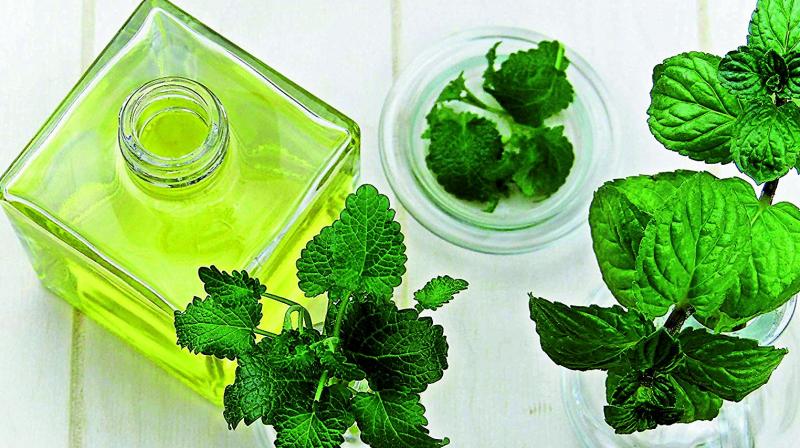Spilling the tea on tea tree oil

The transition from warm to cold weather is the right time to add some super ingredients to your skincare region: the tea tree oil, which is extracted from the leaves of Melaleuca alternifolia (tea tree found in Queensland, Australia), and comes with multiple beauty and medical benefits. The extract works wonderfully for almost every skin and is considered as a magical ingredient for homemade remedies for skin, body, and hair care.
The tea tree oil is derived by crushing the leaves of the plant to extract the oil. It contains compounds such as terpinen-4-ol that has been shown to kill certain bacteria, viruses, and fungi. Terpinen-4-ol also appears to increase the activity of your white blood cells, which help fight germs, informs Dr Vanishree Aithal, MD, Birla Ayurveda. She says, “The germ-fighting properties make tea tree oil a valued natural remedy for treating bacterial and fungal skin conditions, preventing infection and promoting healing. It is an ingredient in many products, and is also available as a pure essential oil (in a 5% concentration).”
Multiple benefits of the oil include fighting with acne, dry scalp, dandruff, and also works as a natural deodorant owing to its bacteria-fighting properties. Vaijayanti Bhalchandra, co-founder of YLG Salons, mentions, “It can be used as an antiseptic for burns, minor cuts and comes in quite handy to treat lice. Although it is suitable for any skin type, just a small patch test is a must before applying it all over, to avoid any allergies or side-effects later. For homemade remedies, apply a few drops of tea tree oil along with aloe vera gel, on your face for rejuvenated and blemish-free skin. A mixture of 1-2 drops of this essential oil with warm water also works as a mouthwash. To treat dandruff, add a few drops of the oil to your shampoo.”
The tea tree oil is antiseptic and it can treat skin conditions. Speaking about its benefits, Rahul Agarwal, CEO, Organic Harvest, says, “Eucalyptol, limonenes are a few ingredients of tea tree oil that help the skin in getting rid of acne. Tea tree oil is antiseptic, anti-bacterial and can be beneficial for various purposes like treating blemishes, dandruff, minor burns, and sores. It boosts hair growth by eliminating flaky skin and increasing blood circulation. The tea tree oil is widely known for its odorous properties and, therefore, it is excessively used in aromatherapies for relaxing.”
Despite several benefits, the oil should be applied with caution to avoid drowsiness, nausea, and rashes. Oral intake of the oil can be poisonous, so do not use it in excess, warn experts. Also, do not to apply it directly on the skin without dilution, cautions Supriya Malik, founder of Indulgeo Essentials. She adds, “For oily acne-prone skin or if you suffer from body acne, you can dilute tea tree oil with a carrier oil like argan or jojoba or add a few drops to the bath for positive results. Mix rosewater with 5–6 drops of tea tree oil and apple cider vinegar and spray on your back and chest for body acne. When it comes to mixing in facemasks, use limited quantity. You can try this facemask at home by combining 1 tablespoon honey and 1 tablespoon of jojoba oil with 5-6 drops of tea tree oil. Also, add 1 tablespoon of yogurt to it and mix well. Apply it on your face and leave it on for about 15-20 minutes. Then rinse it off with lukewarm water for smooth skin.”

